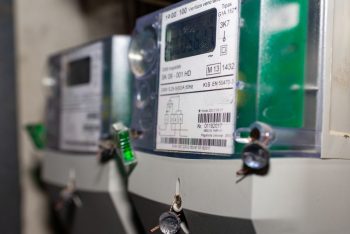Electricity consumption of heat pumps for space heating and hot water in the building sector – A comparison between European Countries
Motivation
In the ongoing discussion concerning climate protection and the Paris Climate Agreement, many European countries are likely to miss their agreed-upon targets for the next decade. One of the most challenging aspects in the energy system in terms of decarbonisation is the building sector, where greenhouse gas reducing technologies are either cost-intensive, limited in their field of application or in their impact on emission reduction.
A possible way to reduce emissions in the building sector is the electrification of heating applications through electricity-driven heat pumps (HP), where thermal energy on a lower temperature level is lifted to a higher temperature level by the addition of external energy i.e. electricity. Commercial heat pumps are mainly applied in private households or commerce and services buildings, where they are predominantly used for space heating and hot water. In a future of low-emission electricity thanks to a high share of renewable energies, heat pumps can become a corner stone of the energy transition in the building sector.
As there is no statistical data for electricity consumption by heat pumps on a European scale publicly available, we developed a method to receive the national electricity consumption of heat pumps in the building sector in regard to the country’s total electricity consumption in buildings. This statistical analysis becomes particularly interesting when combining the data with the national split of application for electricity consumption, which is derived from the continuously improved FfE country profiles.
In doing so, the proportion of electricity consumption by heat pumps and other electricity consumers for space heating and hot water purposes can be displayed for the building sector of each analysed country. The results for the newest available data of 2017 are presented here, which allows for a comparison between different European countries.
Key Findings
Figure 1 shows the results of the described analysis. The 20 countries, which are displayed, are those for which the data is recorded in a sufficient level of detail. The data covers the relevant applications of space heating and hot water for the combined sectors of households and trade, commerce and services. The displayed coloured bars represent the share of electricity consumption of heat pumps and other consumers for space heating and hot water respectively. The coloured dots illustrate the total consumption of electricity of heat pumps for the two applications in the building sector.
In general, it becomes evident that the share of electricity consumption of heat pumps is significantly higher for space heating than it is for hot water in each country. This finding is no surprise, as heat pumps are generally more applicable for space heating purposes. Another notable result of the analysis is the substantial variation of the proportion of electricity consumed by heat pumps regarding the different countries.
While heat pumps play a minor part in the electricity consumption for heating in buildings in countries such as Hungary and Belgium, their share in space heating applications is larger than 50 % in countries like Denmark or Greece, where the electricity consumed by heat pumps accounts for more than two thirds of the total electricity consumption for heating purposes. In absolute numbers, heat pumps in France consume the most electricity for space heating. While total electricity consumption for space heating in buildings is notable high, the share of electricity consumed by heat pumps is below average.

Germany represents an average case of electricity consumption through heat pumps, where 31 % of electricity consumed for space heating and 7 % of electricity consumed for hot water are due to heat pumps. In Italy, the data suggests that 100 % of the electricity used in space heating is due to heat pumps. Here, the simplified assumption that ambient heat and consumed electricity approximate a ratio of one to two for electricity-driven heat pumps shows some shortcomings, since a 100 % share of electricity consumption by heat pumps appears to be unrealistic.
Nonetheless, the illustrated data gives a telling insight into the building sector, where national differences display the proportion of heat pump usage in the building sector, which in turn provides an overview of the degree of electrification in the building sector of each country. For future prospects, it is evident that in most countries heat pumps are not yet standard heating application when using electricity in the buildings especially for the application of hot water.
Method
The European Statistical Office (Eurostat) of the European Commission publishes the annual final energy consumption by energy source and consumption sector for all EU member states. The published data covers the amount of ambient heat utilised for heat pumps in all consumption sectors for various countries. For each unit of used electricity for space heating and hot water through heat pumps, approximately two units of ambient heat are consumed. Through this simplified equation, the amount of electricity used for heating through heat pumps in the building sector is calculated for every tabulated country.
In addition to the available final energy consumption, FfE developed a method to split this annual energy consumption into shares of application for each energy source. This application split exists for each sector in 30 European countries for the year 2014 to 2017. The attained level of detail allows to determine the electricity consumption of each country in the building sector used for space heating and hot water in 2017.
Once the electricity consumption of heat pumps in the building sector and the overall electricity consumption in the building sector are calculated, one can determine the share of electricity consumed by heat pumps in comparison to the share of other electricity consumers for the provision of space heating and hot water in the building sector.
The work presented here is part of eXtremOS funded by the German Federal Ministry of Economic Affairs and Energy. (Funding ID: 03ET4062).

